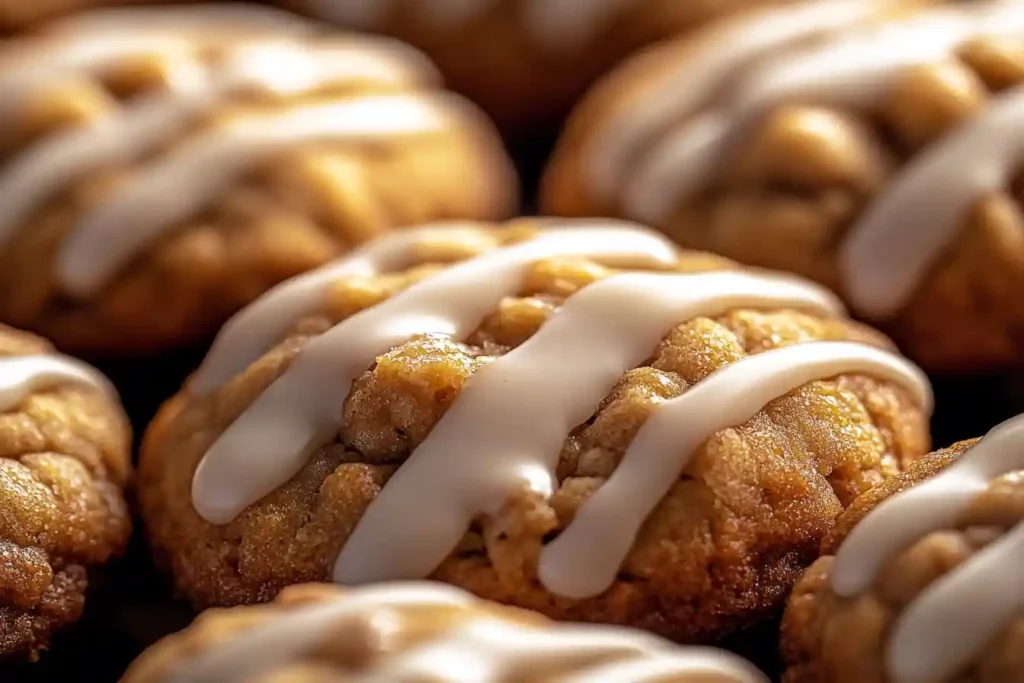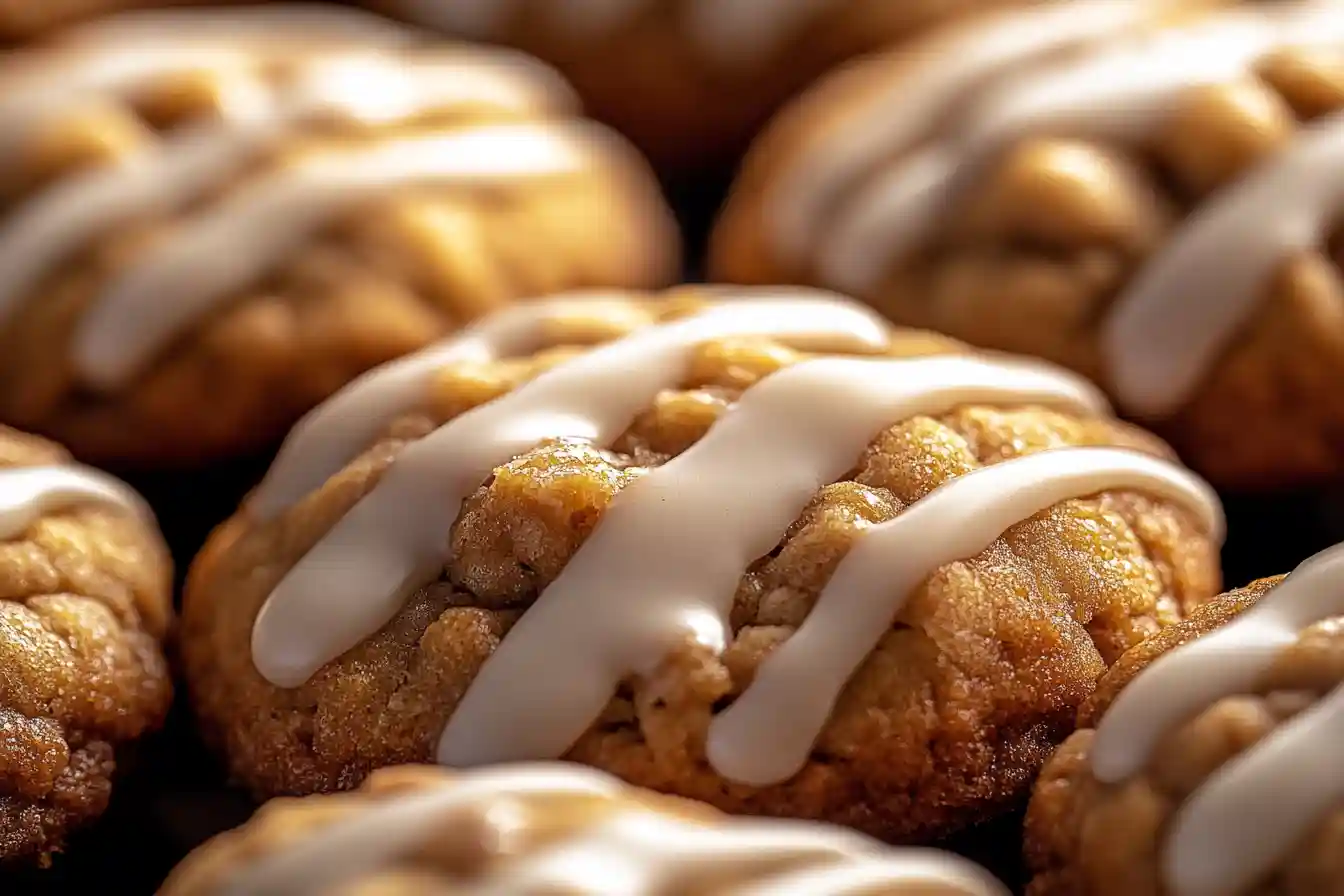Welcome to a culinary adventure where the classic charm of carrot cake meets the irresistible comfort of cookies. In this detailed guide, you’ll learn everything you need to know about creating these unique treats. From their intriguing history to the perfect blend of ingredients and detailed preparation steps, this article offers a comprehensive exploration into the world of carrot cake cookies.
Table of Contents
Carrot cake cookies represent a delightful fusion of two beloved desserts. Imagine biting into a soft, chewy cookie that carries the warm spices and moist texture of a traditional carrot cake. This innovative treat is not only an inventive twist on classic recipes but also an opportunity to enjoy the benefits of real ingredients like carrots, spices, and natural sweeteners.
The concept behind carrot cake cookies is simple yet inspiring. It takes the comforting flavors of carrot cake—think cinnamon, nutmeg, and ginger—and pairs them with the portability and convenience of cookies. Whether you are a seasoned baker or a novice in the kitchen, these cookies are a perfect way to experiment with fusion recipes. They provide a balance between health and indulgence, making them an ideal treat for any time of day.
Moreover, these cookies bring a unique twist to holiday gatherings, after-school snacks, or even as a creative dessert option for dinner parties. As you delve into this article, you will discover the background, history, and detailed preparation techniques that make these cookies a must-try recipe. The journey into the world of carrot cake cookies is as satisfying as the final product itself, and we are here to guide you every step of the way.
History and Origin
The story of carrot cake cookies is as fascinating as the flavor profile itself. Both carrot cake and cookies have rich histories that stretch back centuries, and their fusion is a modern twist on traditional culinary techniques.
Carrot cake has its origins in medieval Europe when sugar and sweet spices were luxuries reserved for the elite. Carrots, naturally sweet and widely available, were used as a substitute sweetener. Over time, the carrot cake evolved into a beloved dessert, especially during celebrations and family gatherings. Its popularity soared during the 20th century, particularly in America, where it became a symbol of indulgence with a healthy twist.
The fusion of these two recipes reflects the innovative spirit of modern baking. With a nod to tradition and an eye on current culinary trends, carrot cake cookies have emerged as a creative answer to the desire for both nostalgia and novelty in desserts. This innovative recipe combines the depth of flavors found in carrot cake with the simplicity and ease of cookie preparation, making it an ideal recipe for both everyday treats and special occasions.
As culinary enthusiasts continue to experiment with ingredients and techniques, recipes like carrot cake cookies remind us that the kitchen is a place of endless creativity. The blending of historical culinary practices with modern tastes is what makes these cookies truly special. It’s a celebration of heritage and innovation in every bite.
Ingredients Overview
Creating the perfect carrot cake cookie involves a careful selection of ingredients. The success of this recipe lies in the balance between wholesome components and the flavorful additions that give it its signature taste.
Core Ingredients
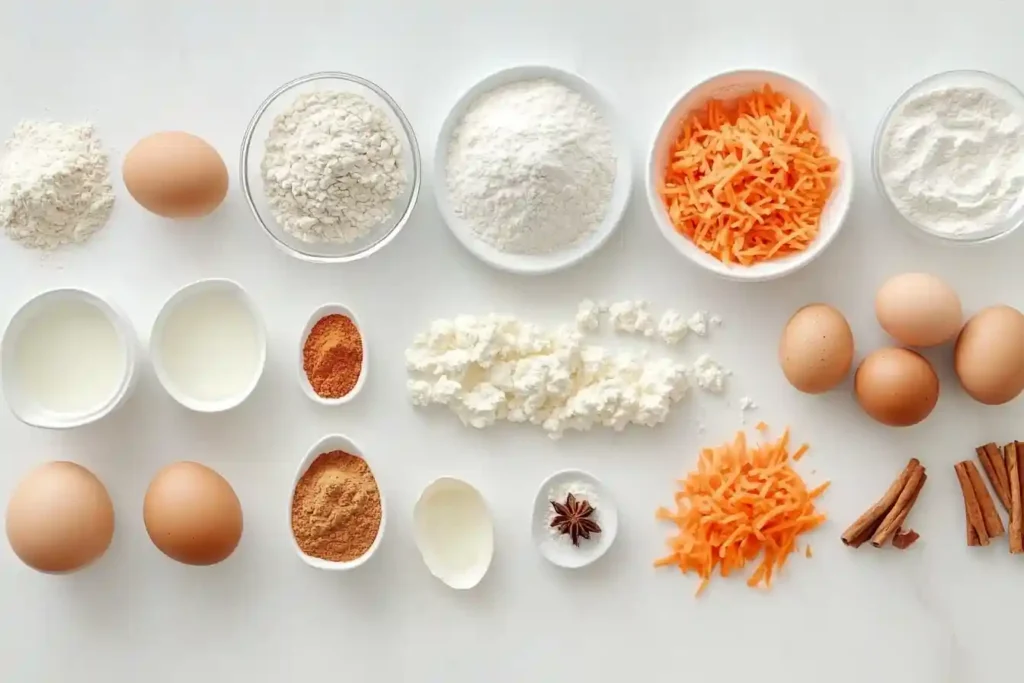
At the heart of these cookies are the essential ingredients that give them their unique character:
- Carrots: Freshly grated carrots are the star of the recipe. They provide moisture, natural sweetness, and a subtle crunch that defines the texture of the cookies.
- Flour: A blend of all-purpose flour or whole wheat flour ensures the right structure and consistency. The choice of flour can influence the overall texture—lighter flours yield a softer cookie, while whole wheat offers a heartier bite.
- Eggs: Eggs act as a binder, helping to meld the ingredients together and provide richness. For those seeking an egg-free version, flaxseed or chia seed mixtures can serve as an effective substitute.
- Sweeteners: Natural sweeteners such as brown sugar and honey enhance the flavor while complementing the earthiness of the carrots. They also contribute to the moist texture of the cookies.
- Spices: A harmonious mix of spices like cinnamon, nutmeg, and a hint of ginger imparts the warm, comforting notes typical of carrot cake. These spices not only boost flavor but also add an aromatic depth that makes each cookie inviting.
- Baking Essentials: Leavening agents such as baking soda and baking powder are crucial. They ensure that the cookies rise properly and achieve the ideal balance between soft and crisp textures.
Optional Ingredients and Substitutions
In today’s culinary landscape, flexibility is key. Carrot cake cookies can be tailored to meet various dietary needs and flavor preferences:
- Dairy Alternatives: For those who are lactose intolerant or prefer a vegan version, dairy can be replaced with plant-based milk or dairy-free yogurt. Coconut oil or vegan butter are excellent substitutes for traditional butter.
- Gluten-Free Options: Gluten-sensitive individuals can opt for gluten-free flour blends, which are widely available and can be used in the same proportions as all-purpose flour. Ensure the blend includes xanthan gum or guar gum to mimic the binding properties of gluten.
- Nut Variations: While nuts such as walnuts or pecans add a delightful crunch, they can be omitted for nut allergies or replaced with seeds like sunflower or pumpkin seeds. These alternatives not only maintain texture but also offer additional nutritional benefits.
- Extra Flavor Enhancers: For a twist on the classic, consider adding raisins, shredded coconut, or even a drizzle of maple syrup. These optional ingredients can elevate the flavor profile, providing a unique spin on the traditional recipe.
The ingredients used in carrot cake cookies are chosen not only for their flavor but also for their health benefits. Carrots, for example, are a rich source of beta-carotene and fiber, while spices like cinnamon are known for their anti-inflammatory properties. This thoughtful selection ensures that the cookies offer both indulgence and nutritional value, making them a balanced treat.
Nutritional Value and Health Benefits
One of the standout features of carrot cake cookies is their impressive nutritional profile. Despite being a dessert, they incorporate ingredients that are beneficial for your health. Carrots are packed with vitamins and antioxidants, which support vision, skin health, and immune function. The spices used not only enhance flavor but also bring their own health benefits, such as improved metabolism and anti-inflammatory effects.
Using natural sweeteners like honey and brown sugar, in moderation, provides energy without relying on artificial additives. Moreover, the option to substitute traditional ingredients with gluten-free or dairy-free alternatives means that these cookies can fit into a variety of dietary lifestyles. This balance between indulgence and nutrition is what sets carrot cake cookies apart as a recipe that can be enjoyed by nearly everyone.
When baked to perfection, the cookies maintain a moist interior with a slightly crisp exterior, showcasing a delightful contrast in textures. This careful preparation ensures that every bite is a harmonious blend of flavor and nutritional goodness. Whether you are looking for a midday snack or a dessert that doesn’t compromise on health, these cookies are designed to deliver both taste and wellness.
Step-by-Step Directions: Preparation
Preparing carrot cake cookies involves a few crucial steps that ensure the final product is nothing short of perfection. This section covers everything from gathering your ingredients to the initial stages of mixing, setting the stage for a successful baking session.
Mixing the Ingredients
The first step in creating these delectable treats is to assemble your dry and wet ingredients separately. Begin by sifting together your flour, baking soda, baking powder, and spices into a large mixing bowl. Sifting not only helps to remove any lumps but also ensures that the spices are evenly distributed throughout the flour. This is a vital step, as it prevents any pockets of intense spice that could overwhelm the delicate balance of flavors.
In a separate bowl, whisk together the eggs, brown sugar, and honey until the mixture is light and frothy. This process is key to incorporating air into the mixture, which helps in achieving a lighter, softer texture in the final cookie. Once the wet ingredients are well combined, gradually add them to the dry ingredients, stirring gently to maintain an even consistency. Overmixing at this stage can result in tough cookies, so it’s important to blend just until everything is incorporated.
To ensure the best results, use a spatula to fold the ingredients rather than a vigorous stirring motion. This gentle mixing method helps maintain the integrity of the batter, preserving the air bubbles that contribute to the cookies’ soft texture. As you work through the mixing process, you’ll notice the batter beginning to take shape—a sign that the ingredients are combining harmoniously.
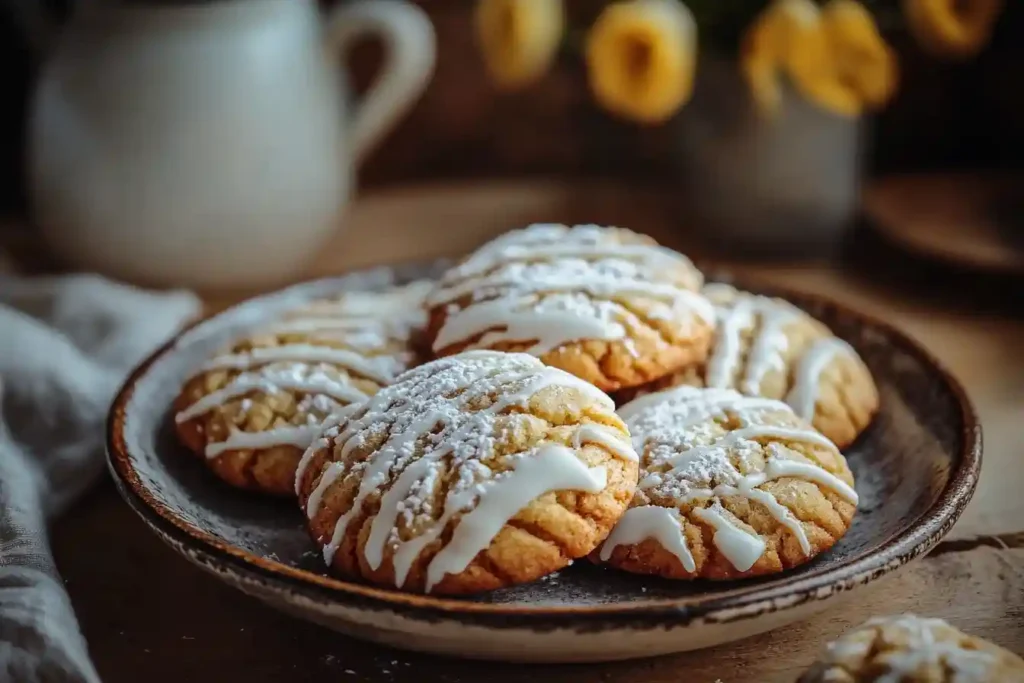
Incorporating Carrots and Spices
Once your basic batter is prepared, it’s time to add the star ingredient: freshly grated carrots. Using a fine grater, shred the carrots until they resemble small, delicate pieces. This not only ensures that they blend seamlessly into the batter but also helps distribute their natural sweetness evenly. Gently fold the grated carrots into the batter, ensuring that every spoonful carries a balanced amount of carrot flavor.
In addition to carrots, this is the perfect moment to incorporate any additional spices or optional ingredients you may have chosen. Whether you decide to add extra cinnamon, a hint of ginger, or even a handful of raisins, mix these components in with care. The goal is to achieve a uniform texture and flavor throughout the batter so that each cookie reflects the full spectrum of this innovative fusion recipe.
By carefully following these preparation steps, you set the foundation for creating carrot cake cookies that are not only delicious but also visually appealing and nutritionally balanced. The process of mixing and incorporating the ingredients is as crucial as the baking itself, as it determines the final texture and flavor profile of the cookies.
Step-by-Step Baking Process
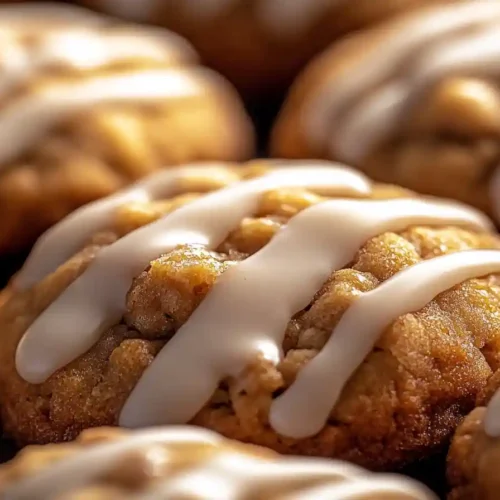
Carrot Cake Cookies
Ingredients
- 120 g Freshly Grated Carrots
- 190 g All-Purpose Flour
- ½ teaspoon Baking Soda
- ½ teaspoon Baking Powder
- ¼ teaspoon Salt
- 150 g Brown Sugar
- ⅓ cup Honey or Maple Syrup
- 2 Large Eggs
- ½ cup Vegetable Oil or Melted Butter
- 1 teaspoon Vanilla Extract
- 1 teaspoon Ground Cinnamon
- ¼ teaspoon Ground Nutmeg
- 4 oz 115 g Cream Cheese (optional for filling)
- ½ cup Chopped Walnuts or Pecans optional
- ½ cup Raisins or Dried Cranberries optional
Instructions
- Preheat your oven to 350°F (175°C).
- Line a baking sheet with parchment paper or lightly grease it.
- Mix Dry Ingredients:
- In a large bowl, sift together 190 g of all-purpose flour, ½ teaspoon of baking soda, ½ teaspoon of baking powder, ¼ teaspoon of salt, 1 teaspoon of ground cinnamon, and ¼ teaspoon of ground nutmeg.
- Combine Wet Ingredients:
- In a separate bowl, whisk together 150 g of brown sugar, ⅓ cup of honey or maple syrup, 2 large eggs, ½ cup of vegetable oil (or melted butter), and 1 teaspoon of vanilla extract until smooth.
- Incorporate Grated Carrots:
- Add 120 g of freshly grated carrots to the wet mixture and stir until evenly combined.
- Combine Wet and Dry Mixtures:
- Gently fold the dry ingredients into the wet mixture until just combined. Avoid overmixing to maintain a light texture.
- Optional – Add Cream Cheese Filling:
- For carrot cake cookies with cream cheese filling, soften 115 g of cream cheese. You can swirl it into the batter or place a small dollop on top (or in the center) of each cookie mound.
- Optional – Fold in Additional Ingredients:
- If desired, fold in ½ cup of chopped walnuts/pecans or ½ cup of raisins/dried cranberries for extra texture and flavor.
- Shape and Bake:
- Using a cookie scoop or spoon, form even mounds of dough on the prepared baking sheet, ensuring adequate spacing between each cookie.
- For cookies with cream cheese filling, add a small dollop of cream cheese on each mound or gently press a small amount into the center.
- Bake for 15 to 20 minutes, or until the edges are lightly golden.
Notes
“For a vegan version, replace eggs and dairy with appropriate substitutes.”
“Adjust spice levels according to your taste preferences.”
Nutrition
Moving on from preparation, we now delve into the baking process. In this section, you’ll learn the exact techniques needed to ensure your carrot cookies (and variations like carrot cake cookies with cream cheese filling or carrot cake muffins) bake evenly and reach that perfect balance of moistness and crispness.
Preheating and Oven Setup
Before placing your tray in the oven, preheat it to 350°F (175°C). This temperature is ideal for achieving an even rise and ensuring that every bite of your carotte cake creation is baked to perfection. Using an oven thermometer can help maintain accuracy, especially if you plan to experiment with more delicate versions like cheese carrot cake cookies.
- Tip: Position your baking trays in the center of the oven. For larger batches, consider rotating them halfway through the baking cycle to counteract any hot spots.
Baking Techniques for Consistent Results
Whether you’re making traditional carrot cookies or experimenting with innovative recipes such as carrot cake cream cheese variants, the following tips will help ensure consistency:
- Uniform Thickness: Ensure that your cookie dough is spread evenly on the baking sheet. If you are making carrot cake bars instead, press the batter uniformly into your pan.
- Silicone Mats or Parchment Paper: These tools not only prevent sticking but also promote even heat distribution, which is essential for recipes that include chunky ingredients like grated carrots or cream cheese filling.
- Baking Time Adjustments: Thicker treats, such as carrot cake muffins, may require a slightly longer baking time than thinner cookies. Test for doneness by inserting a toothpick in the center—if it comes out clean or with a few moist crumbs, your bake is complete.
For more background on the evolution of this versatile dessert, you might explore the detailed history of the classic Carrot Cake on Wikipedia.
Cooling and Storing Your Baked Goods
After baking, proper cooling is key to locking in flavor and texture.
Cooling on the Baking Sheet
Allow your freshly baked carrot cookies, whether they’re the classic type or a carrot cake cookies with cream cheese filling variation, to cool on the tray for about 5 minutes. This short period lets the outer edges firm up slightly, making them easier to handle.
Transferring to a Cooling Rack
Once the initial cooling is complete, gently transfer the cookies to a cooling rack. This ensures that air circulates around each cookie, preventing sogginess—an essential step when dealing with recipes like carrot cake bars or carrot cake muffins that contain moist ingredients.
Storage Tips for Longevity
To preserve the freshness and flavor of your baked treats, store them in an airtight container:
- Room Temperature: Ideal for carrot cookies healthy variations, keeping them for up to a few days.
- Refrigeration: Necessary if your recipe includes cream cheese elements. Just allow the cookies to come back to room temperature before serving.
- Re-crisping: If you find your cookies have softened over time, a brief stint in a preheated oven at low heat can help restore their crunch.
Presentation and Serving Ideas
Presentation is where your creative flair can shine, elevating your carrot cake cookies or any of its variants to a whole new level of appeal.
Creative Garnishing Techniques
Garnishing adds both visual interest and a flavor boost. Consider these ideas:
- Powdered Sugar Dusting: A light sprinkle on carrot cookies healthy options can enhance their appearance without overwhelming the flavor.
- Cream Cheese Glaze: Drizzle over carrot cake cookies with cream cheese filling to accentuate the rich, tangy notes.
- Nut Toppings: Chopped walnuts or pecans offer a delightful crunch that pairs perfectly with the soft, spiced interior of your carrot cake muffins or bars.
- Fresh Herbs: A small sprig of mint or basil can add a burst of color and a subtle flavor contrast, making your dessert table even more inviting.
Plating and Serving Suggestions
For an appealing display:
- Rustic Platters: Arrange your baked goods on a wooden board alongside fresh fruit or a dipping sauce.
- Layered Presentation: Stack different forms—like alternating layers of carrot cake muffins with slices of carrot cake bars—to create a visually dynamic dessert.
- Beverage Pairings: Complement your treats with a carefully selected drink. For instance, a vanilla latte or a tangy iced tea pairs wonderfully with the spiced flavors of your carrot cookies.
You might also consider adding a creative touch by serving alongside other treats, such as our popular small batch chocolate chip cookies, to offer guests a diverse dessert experience.
Expert Tips and Troubleshooting
Even the best bakers encounter challenges. Here are expert tips and common pitfalls to help you perfect your carrot cake creations:
Common Baking Challenges
- Overmixing: Overmixing can result in a denser texture. When combining your wet and dry ingredients, gently fold until just mixed. This is especially important in recipes that incorporate grated carrots or cream cheese layers.
- Uneven Baking: If you notice uneven browning, your oven might have hot spots. Rotating the trays or using an oven thermometer can help resolve this.
- Dough Consistency: If your dough is too wet, it might spread excessively during baking. Add extra flour gradually to achieve a balanced consistency. Conversely, if it’s too dry, a splash of milk or dairy-free alternative can bring it together.
Troubleshooting Specific Variants
- Carrot Cake Cookies with Cream Cheese Filling: Ensure the cream cheese is at room temperature before incorporating it into your dough. Cold cream cheese can lead to lumps or an uneven distribution in the cookie.
- Carrot Cake Muffins: Adjust baking times since muffins require a slightly longer duration. Always check the center with a toothpick.
- Carrot Cake Bars: Pressing the batter evenly into the pan is crucial. If the edges begin to over-brown before the center is set, cover the pan loosely with aluminum foil to prevent burning.
For further insights and to compare methods, visit our comprehensive Carrot Cake Recipe. This page offers in-depth techniques that apply to various forms of carrot cake, from traditional recipes to innovative versions like carrot cookies healthy variants and cheese carrot cake.
Variations and Customizations
One of the most exciting aspects of this recipe is its adaptability. You can easily transform the basic carrot cake recipe into multiple variations that cater to different tastes and dietary needs.
Enhancing the Traditional Recipe
- Carrot Cake Cookies with Cream Cheese Filling: For an extra indulgent twist, add a layer of cream cheese filling in the center of your cookies. This variant brings a rich, tangy flavor that complements the spiced carrot base.
- Carrot Cake Muffins: By altering the baking method slightly, you can create muffins that are perfect for on-the-go breakfasts or as a hearty snack.
- Carrot Cake Bars: Spread your batter into a baking pan and cut it into bars once cooled. This method is great for sharing at parties or enjoying as a convenient dessert.
- Cheese Carrot Cake Variants: Swirl a mixture of cream cheese and a hint of lemon zest into your batter for a visually appealing and flavor-packed treat.
Healthier Alternatives
For those looking to create carrot cookies healthy options:
- Substitute Flours: Replace a portion of refined flour with whole wheat or almond flour for a nuttier taste and improved nutritional profile.
- Natural Sweeteners: Swap out refined sugars with honey or maple syrup to keep your recipe as natural as possible.
- Dairy-Free Variations: Use plant-based milk and vegan butter if you prefer a dairy-free version. The technique remains the same, and the results are just as delightful.
Experimenting with Spices and Additions
- Spice Variations: While cinnamon and nutmeg are classic choices, feel free to experiment with cardamom or ginger for an extra kick. Each spice lends a unique character to your carotte cake.
- Additional Ingredients: Consider incorporating dried fruits like raisins or cranberries for added texture and flavor. Chopped nuts such as walnuts also provide a pleasant crunch.
- Texture Play: If you love a contrast of textures, try sprinkling a little oats or even a dusting of cocoa powder on top before baking.
For creative inspiration, explore our article on Green Spots in Carrot Cake, which offers unique ideas to further enhance your baking experiments.
Pairing Carrot Cake Treats with Beverages
The right beverage can elevate your carrot cake treats, whether they’re served as carrot cookies, carrot cake muffins, or even as classic carotte cake slices.
Beverage Pairing Ideas
- Coffee and Lattes: A rich, frothy latte or a bold cup of coffee enhances the spicy-sweet profile of your carrot cake cream cheese cookies.
- Iced Tea: A refreshing iced tea with a squeeze of lemon complements the warm spices in your recipe without overwhelming the palate.
- Milk Alternatives: For a lighter option, try pairing your treats with almond or oat milk. Their subtle flavors provide a gentle contrast to the robust spices.
- Herbal Infusions: Consider serving your cookies alongside a lightly sweetened herbal tea, which can add a calming note to the vibrant flavors of your baked goods.
Final Thoughts and Serving Recommendations
As we conclude this baking journey, remember that the versatility of your carrot cake recipe allows you to create an array of delicious variations—from classic carrot cookies to inventive carrot cake cookies with cream cheese filling, and even carrot cake muffins or bars. Experiment with different textures, spices, and garnishes until you find the perfect balance that suits your taste.
Encouragement to Innovate
Don’t be afraid to try new variations:
- Transform your recipe into a cheese carrot cake by adding a swirl of tangy cream cheese.
- Experiment with carrot cookies healthy options by integrating whole grain flours and natural sweeteners.
- Use this guide as a springboard for creating your signature dessert that reflects both tradition and modern creativity.
For additional recipe ideas and inspiration, check out our other delightful offerings, including our popular small batch chocolate chip cookies.
A Note on Recipe Heritage
Every version of this carrot cake recipe tells its own story—from the classic Carrot Cake Recipe that laid the foundation to the modern twists that keep reinventing this timeless dessert. As you share your culinary creations with friends and family, you’re not just serving a treat; you’re celebrating the rich history and innovative future of carrot cake in all its forms.
Frequently Asked Questions
What makes carrot cake cookies different from regular cookies?
Carrot cake cookies are a unique fusion that combines the moist, spiced elements of a traditional carrot cake with the convenience and texture of cookies. Unlike standard cookies, these treats often feature ingredients such as grated carrots and warming spices like cinnamon and nutmeg. Some versions even include a cream cheese component, resulting in carrot cake cookies with cream cheese filling that offers a tangy twist. This innovative approach not only enhances flavor but also allows for creative variations such as carrot cake muffins and carrot cake bars.
Can I make a healthier version of these carrot cookies?
Absolutely! If you’re interested in creating carrot cookies healthy options, you can substitute some of the refined flours with whole wheat or almond flour. Natural sweeteners like honey or maple syrup can replace refined sugars, boosting the nutritional profile without compromising taste. Additionally, if you are avoiding dairy, use plant-based milk and vegan butter. These adjustments help maintain the classic flavor while offering a more wholesome alternative. For more ideas on modifying your recipe, check out our comprehensive Carrot Cake Recipe.
How do I prevent my carrot cake muffins from overbaking?
Carrot cake muffins, which are another delightful twist on the traditional carrot cookies, require careful monitoring during baking. To prevent overbaking, preheat your oven to the correct temperature (usually around 350°F/175°C) and use an oven thermometer to ensure accuracy. It’s important to test for doneness by inserting a toothpick into the center—if it comes out with a few moist crumbs, they’re ready to be taken out. Also, consider the texture of any added ingredients like a cream cheese filling; if these are too cold or too thick, they may affect the overall baking time. Adjust your timing accordingly to achieve a soft and moist interior.
What are some common issues when making cheese carrot cake cookies or bars?
When baking cheese carrot cake treats (such as carrot cake cookies with cream cheese filling or carrot cake bars), common issues can include uneven baking and overmixing of the batter. Overmixing can lead to a denser texture, so always fold your ingredients gently. Uneven baking might result from hotspots in the oven; rotating your baking tray halfway through the process can help alleviate this issue. If you find your treats spreading too much or browning unevenly, double-check your ingredient ratios—especially if you’re experimenting with alternative flours or dairy-free substitutions. These tips help ensure that your innovative versions, including carrot cookies and traditional carotte cake preparations, turn out perfectly every time.
Can I experiment with different flavors in my carrot cake recipes?
Yes, one of the joys of baking carrot cake recipes is their versatility. You can explore a range of flavor combinations—from adding extra spices like ginger or cardamom to including mix-ins like raisins or chopped walnuts. For an extra decadent version, try incorporating a swirl of cream cheese into your batter to create carrot cake cookies with cream cheese filling or even a marbled cheese carrot cake variant. For more creative inspiration on flavor experimentation, you might also enjoy our detailed guide on Green Spots in Carrot Cake.
